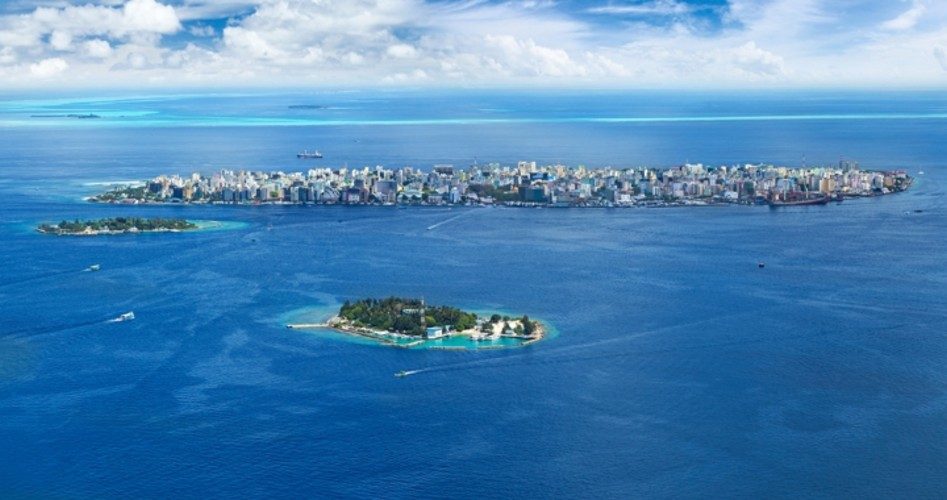
For decades, global-warming alarmists have been predicting that low-lying islands in the Pacific and Indian Oceans would soon vanish because of rising sea levels. But according to a new study, the overwhelming majority of these islands have not shrunk, and some have even grown.
“Over the past decades, atoll islands exhibited no widespread sign of physical destabilization in the face of sea-level rise,” reads the abstract of the study, published in the journal WIREs Climate Change. “A reanalysis of available data, which cover 30 Pacific and Indian Ocean atolls including 709 islands, reveals that no atoll lost land area and that 88.6% of islands were either stable or increased in area, while only 11.4% contracted.”
“Importantly,” wrote study author Virginie K. E. Duvat, a professor of coastal geography at France’s University of La Rochelle, “islands located in ocean regions affected by rapid sea-level rise showed neither contraction nor marked shoreline retreat, which indicates that they may not be affected yet by the presumably negative, that is, erosive, impact of sea-level rise.”
In fact, Duvat found that local human activity, far more than alleged climate change, was responsible for island shrinkage. “Land reclamation and causeway construction caused major changes in island land area and configuration not only in urban, but also in rural atolls,” she explained, adding that the “removal and the clearing of the native vegetation, respectively caused marked changes in island configuration and shoreline destabilization on some islands.”
Such news must come as a shock to climate-change alarmists, who have insisted that supposed global warming is causing the polar icecaps to melt and, consequently, sea levels to rise, with seemingly predictable results for islands just above the current sea level. Indeed, the United Nations once warned that by 2010 there would be some 50 million “environmental refugees” worldwide, in part because of disappearing islands.
At the time of that dire forecast, New Zealand offered to take in the 11,600 inhabitants of the nearby Tuvalu islands should they find themselves underwater. The Kiwis, however, needn’t fear a migrant flotilla anytime soon: A University of Auckland study released in February found that “eight of the atolls and almost three-quarters of the islands grew during the study period, lifting Tuvalu’s total land area by 2.9 percent, even though sea levels in the country rose at twice the global average,” reported Agence France-Presse.
Another poster child for vanishing islands is the country of Kiribati, which consists of 32 atolls and reef islands and one raised coral island. “Scientists have said that the island nation, along with other low-lying Pacific nations, could be uninhabitable within decades,” CBS News reported last year. Under the leadership of then-President Anote Tong, Kiribati — surely thinking only of saving the planet and not of the largess it might receive from wealthier countries — signed on to the 2015 Paris Climate Accord. Tong later characterized U.S. President Donald Trump’s decision to withdraw from the agreement as “selfish.”
But Kiribati residents need not stock up on scuba gear just yet. According to Duvat, the country’s North Tarawa island chain remains stable, with most islands growing, and its South Tarawa chain even increased in size. In fact, it grew more than any other atoll Duvat studied.
Likewise, while the Maldives’ government forecast that its islands would be completely covered by water by 2018, the nation remains dry and, in fact, has a thriving tourist industry. Its islands, too, are stable, Duvat found.
Such evidence forced the UN to admit recently that “models and other evidence indicate that unconstrained Pacific atolls have kept pace with [sea-level rise] with little reduction in size or experienced a net gain in land.”
Of course, as Breitbart’s James Delingpole observed, all of this is to be expected. “First, sea levels have been rising at the same steady rate for centuries and show no sign of acceleration,” he wrote. “Secondly, as Darwin understood as long ago as the 1830s, when the sea rises coral grows with it.”
Also to be expected is that such findings as Duvat’s will make little headway against the prevailing winds of climate-change hysteria, which seems to be immune to evidence and logic. But those of us in the “reality-based community” can dream, can’t we?
Photo of Malé, Maldives: Grafner via iStock / Getty Images Plus



